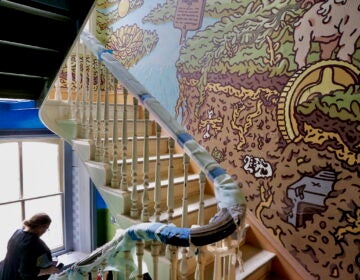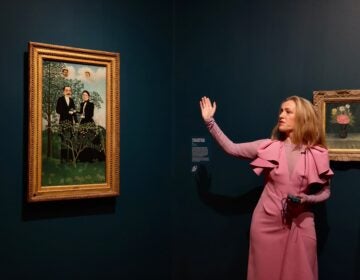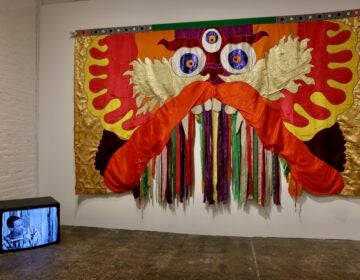Cotton as muse at the African American Museum
Artist John Dowell mixes personal memory and American history in his surreal vision of cotton, now at the African American Museum in Philadelphia.
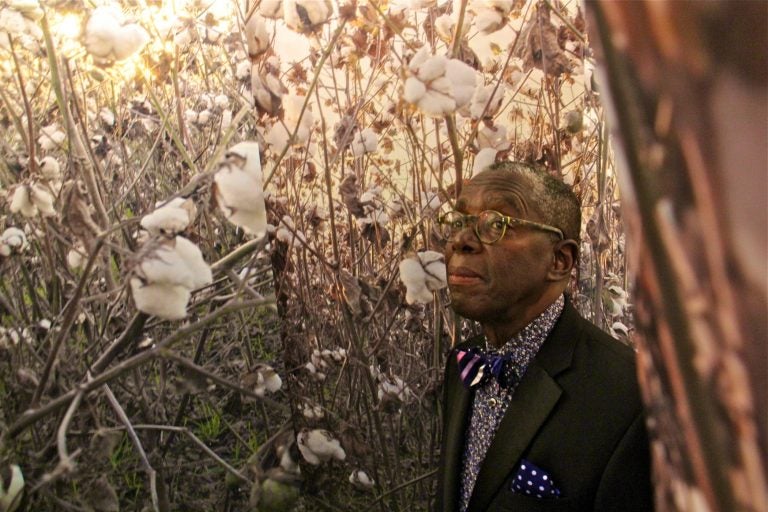
Artist John Dowell moves through his installation, "Lost in Cotton," at the African American Museum in Philadelphia. The work evokes his grandmother's experience of being lost in a cotton field as a small child. (Emma Lee/WHYY)
In the summer of 2011, John Dowell started having dreams about his grandmother, Big Mommy. After the second dream, his sister warned him that Big Mommy wanted something.
“I started asking my brothers and sisters, ‘Are you dreaming of Big Mommy?’ They said no. My sister said, ‘Uh-oh, you in trouble,’” said Dowell. “So I had another dream, and I woke up in the middle of the night and said, ‘OK, Big Mommy, what did I do? What’s up?’ And I had this image of her with cotton.”
Dowell remembered that his grandmother, long since passed, had told him that when she was very small – 4 or 5 years old – she got lost in a dense field of cotton.
Dowell is a professor emeritus at the Tyler School of Art at Temple University, not far from where he grew up in the Richard Allen housing project in North Philadelphia. He’s a city guy. He knew the history of slavery in cotton plantations in the South, but he had never actually been in a cotton field.
“Cotton: The Soft, Dangerous Beauty of the Past” is an exhibition of Dowell’s photography now on view at the African American Museum in Philadelphia. In order to appease the spirit of his grandmother, Dowell – a former Voodoo priest – visited cotton farms in Georgia to take pictures.
As cotton grows, the plants become extremely dense. Dowell’s camera goes deep into the thickly entwined stalks where it is easy to imagine a 5-year-old girl becoming desperately lost. He catches “second-day” cotton when it sprouts a roselike flower, and “perfect” cotton when its hard shell splits into a five-point star.
The exhibition features a shrine to his grandmother, with baskets full of raw cotton still on the stem. Visitors can hold the white puff – surprisingly heavy – and pull its strands into a feathery tuft.
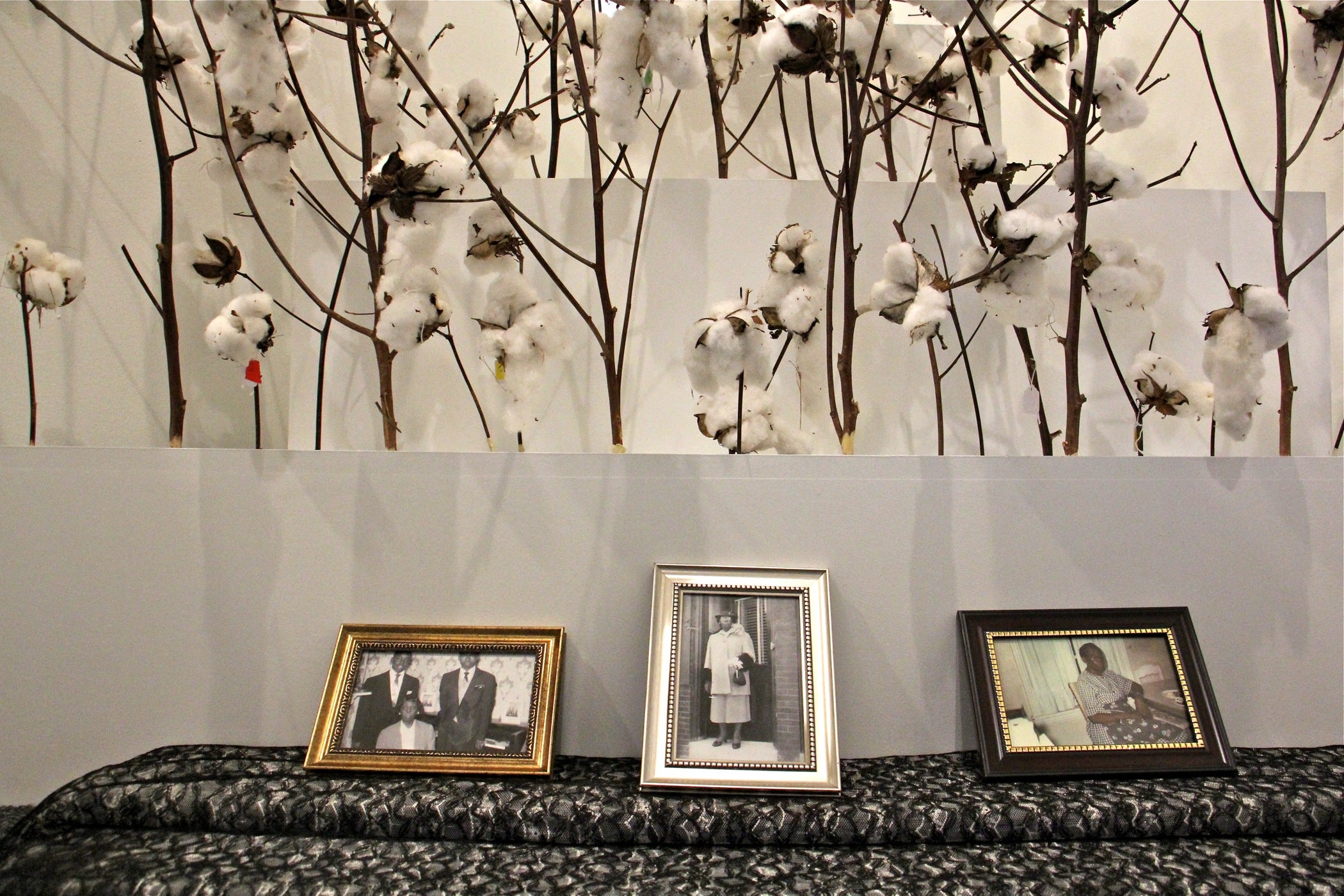
Cotton also has an ugly history.
“It is beautiful, but if you grab it wrong, you’re bleeding,” said Dowell. “Cotton is a trigger to the past. I never knew how strong an influence it had on our country. It drove the whole economy.”
As a young nation, America needed to establish its own industries to distance itself from British trade. The American cotton textile industry was an important step toward economic independence. It was able to thrive, in large part, because of slave labor.
Dowell’s approach is part history lesson, part personal mythology, and part straight-ahead botanical photography. It adds up to a surreal vision of cotton. He digitally manipulated his large-scale pictures to imagine cotton as ethereal or menacing or subversive.
A set of pictures taken in Manhattan is superimposed with fields of cotton, in reference to Seneca Village, a thriving African-American community that was once in the center of the city. In the 19th century, through eminent domain, the land was seized then razed to make Central Park.
The photos show dense fields of cotton choking the parks, avenues, and storefronts of New York. People caught in Dowell’s photos appear to be drowning.
“Face it, people are struggling,” he said. “You’re still on a plantation. Somebody owns everything, and the rest of us have to work to keep them in power. It’s still the same thing.”
While the cotton industry has a dark past, Dowell regards it as a lovely plant. “There’s nothing wrong with it,” he said. “When you’re out there, you can see that.”
He likes to imagine that the plant had a sympathetic feeling for the slaves picking cotton, and proactively – with whatever powers inherent to the plant — tried to aide them in their plight. To illustrate that vision, the exhibition will feature a dance developed by Dowell and choreographer Gary Jeter, personifying cotton. It will be performed in the gallery on Oct. 3 and 5.
WHYY is your source for fact-based, in-depth journalism and information. As a nonprofit organization, we rely on financial support from readers like you. Please give today.



